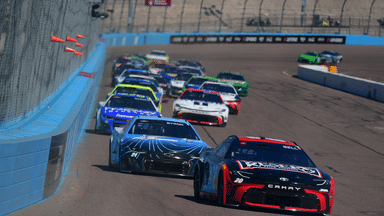More often than not, it is only the driver standings that catch the curious eye in NASCAR. However, the owner standings play a crucial role as well in deciding the fate of teams. Joe Gibbs Racing’s president Dave Alpern has explained through a video how exactly it is that NASCAR pays teams at year-end based on these standings.
Advertisement
Depending on a driver’s finishing position in a race, the promotion awards them the same number of points in the driver and owner standings. While the driver points are tied to the individual’s performance, the owner points are tied solely to the car number. Typically, both these points table are replicas of each other but there are scenarios when a driver has to miss out on races, and that’s where the imbalance begins.
According to Alpern, “At the end of the year, there are four different buckets that teams get paid by NASCAR. Two of those are dictated by the car and two by the driver’s points. They’re different and they’re both very important to the team.” There have been several instances of such a contrast between the owner and driver points, the most recent being Chase Elliott’s case in 2023.
The Hendrick Motorsports driver collected 820 points in 29 races while his car, the #9 Chevrolet Camaro collected 2296 points in 36 appearances. The difference stemmed from the 7 races that Elliott had to miss out, courtesy of his snowboarding accident.
Why Jeff Gordon wants the owner’s championship battle to gain attention
Last October, the Vice Chairman of Hendrick Motorsports, Jeff Gordon went on SiriusXM NASCAR Radio to throw more light on the importance of the owner standings. He claimed that the points accumulated there were what decided how much money came in for teams.
In his words, “We are focused on the drivers, it’s great, we should be focused on that but what can we do more of to recognize the efforts of the teams and that championship that’s going on because that’s where the money comes from, is the owner’s points.” He used the example of Elliott from within his own team to lay out an example.
Elliott had still been racing hard in the postseason to gain traction in the owner standings though he’d already missed out on making the playoffs. Gordon believed that it was how NASCAR could travel on a path that would recognize the work that teams were doing.








